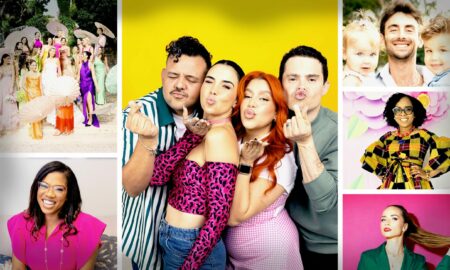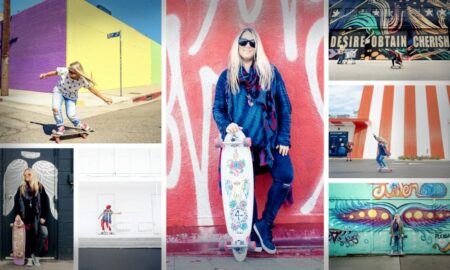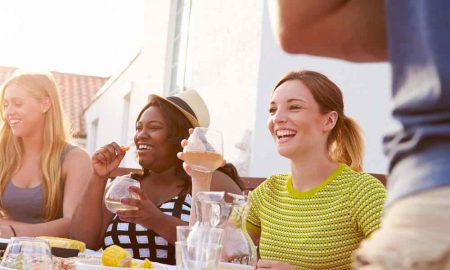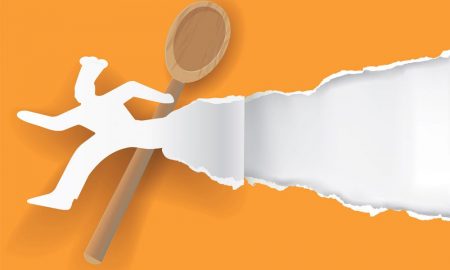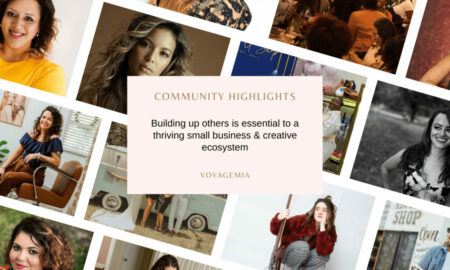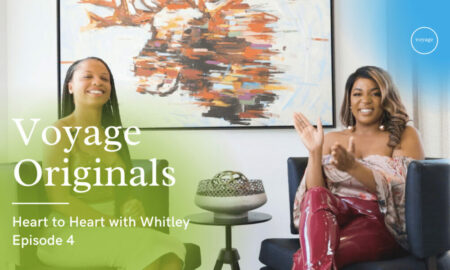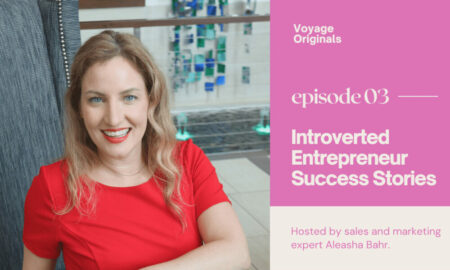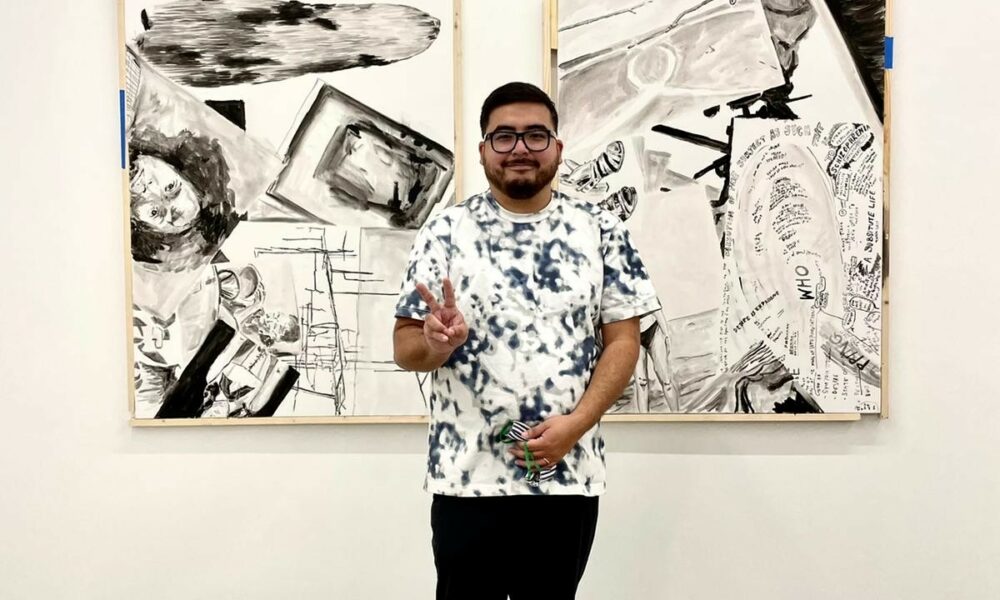

Today we’d like to introduce you to Gonzalo Hernandez.
Hi Gonzalo, thanks for sharing your story with us. To start, maybe you can tell our readers some of your backstory.
I was born and raised in Lima, Peru, living in the States for the past seven years. I moved to Miami in 2021, but I lived in Broward County from 2015-to 2016. I came from Kansas City, Missouri, I was there for 2020, and previous to that I finished my master’s degree at Scad in Savannah, Georgia where I stayed from 2017-2020. I was looking for more opportunities as an artist, and Miami felt like a great place to move. I worked at several things as soon as I moved, I was an exhibition guide at Superblue, Miami and I recently got an internship at the curatorial department at PAMM.
Prior to that, I was looking for a studio since I had a home studio. In the summer of 2021, I moved to the Bakehouse Art Complex as my permanent studio. In October of 2021, I got my first solo exhibition here in Miami, at Laundromat Art Space, it was an opportunity offered by Ronald Sanchez, director of the space. I was producing work without a specific deadline and he visit my studio probably around August and offered me a solo show. After that opportunity, I was able to create work for the art fairs during the Miami Basel week in December, and I presented work at Untitled art fair and Together.
I work as a multidisciplinary artist, recently I am more interested in fiber, textile works since I have a degree from the Savannah College of Art and Design on Fibers. I managed to turn the work that I created for my first solo exhibition here in Miami and presented it in other venues such as Zona Maco 2022 in Mexico City last February with La Galeria Rebelde. Currently, I’m working on a couple of upcoming exhibitions one group show in Chicago and a Solo exhibition in Peru. Exhibitions and opportunities have come naturally since I got a permanent studio where people can actually visit me and have studio visits with curators, artists, and other colleagues related to the art world.
Alright, so let’s dig a little deeper into the story – has it been an easy path overall and if not, what were the challenges you’ve had to overcome?
Not really smooth road. I moved a lot since I moved from Lima Peru in 2015, but I think moving is good. I was able to connect with great people during and after my graduate program. During my time in Savannah, having the opportunity to visit a museum that presents contemporary and really relevant artists as part of their programming was a really important part of my learning process. Also given the opportunity in 2020 to have my first museum show at the SCAD Museum was something really important for my career. But I will say connecting with people is something that makes the road smooth for sure. I was able to connect with peers and curators at different levels, and it’s something that I keep trying to do here in Miami too. There is definitely hard moments and hard thing to deal with, especially with the lack of visibility or just being able to get your work around in a community where you’re new. Getting to know people in a community that has artists living here for the past 20 or 30 years is a real challenge, and also artists that just don’t want to share their experiences, I try to run from people and artists that don’t share, I think sharing and caring is what drives you to success.
Thanks for sharing that. So, maybe next you can tell us a bit more about your work?
I am an artist that works in a lot of different mediums, it is really hard to recognize my works in terms of how visually they look, but I think what merged everything is the concepts. I am working with ideas of success and failure as a general concept, and lately, I work with the question of what does it mean to be an artist today? as a big umbrella question that could be answered according to the project that I’m working on. I’m interested in the history of the artists, bio’s, information about collections, museums, working about the contemporary art world from the contemporary art world.
Lately, I used the idea of appropriation as a big part of my work, my last project was research on collections here in Miami, I visited some of the important collections such as the De La Cruz Collection, Rubell collection, and Margulies collections, to get a sense of how represented I feel inside those spaces. I wanted to know how many Latinxs or Peruvians are in these major collections and from there create works in relation to that idea of being represented. I recently presented a group of 12 small paintings at the exhibition “Viewpoints”, at the BAC, curated by Laura Novoa, the paintings are appropriations of other Peruvian artists that were part of a book edited by Mario Testino, titled ’77 Contemporary Peruvian Artists’.
Currently, I’m also working on my upcoming exhibition at Vigil Gonzales Galeria in Cuzco, Peru. I’m using some texts and images from catalogs to create an installation related to concepts of appropriation and also ideas of success related to artists that I admire. I also recently have a group show at Kates Ferri Projects in New York, the gallery that represents my work. I presented a group of paintings that I created in November of 2021 as part of the residency in KFP, which are collaged-based paintings of artworks that are part of the Rubell Collection.
Networking and finding a mentor can have such a positive impact on one’s life and career. Any advice?
I don’t have a bit of clear advice other than keep making work and showing up. An essential part of our job as artists is being able to show your work, and so, opportunities, or at least in my experience, I show up to most of the openings to meet new people and just catch up with friends and colleagues. The other part of it that you need to keep making, you never know when an opportunity is coming and you have to be ready for that.
Another piece of advice will be that people might not like your work and that’s ok, not everyone has the same knowledge or taste. You need to work on finding an audience, and the most important thing is being generous with your work and peers in general. It is so important to work and treat people the way you want to be treated, I have some experience working with artists as a gallery assistant, and I believe at the end is all about how you are as a human and not a lot about the work. So always keep that in mind, you have to be kind and humble, especially if you’re an artist.
Contact Info:
- Email: gonzalohernandez3@hotmail.com
- Website: www.gonzalo-hernandez.com
- Instagram: https://www.instagram.com/hernandezgonzalo/







Image Credits
Install photos: Michael Lopez Artworks: Pedro Wazzan Portrait: Dainy Tapia

